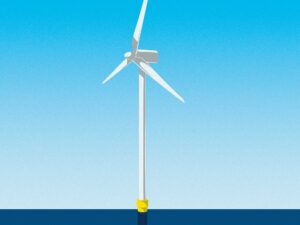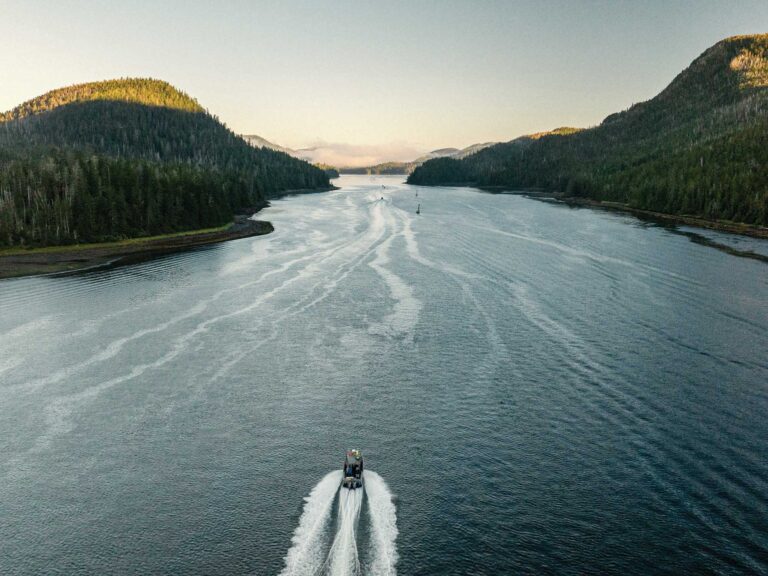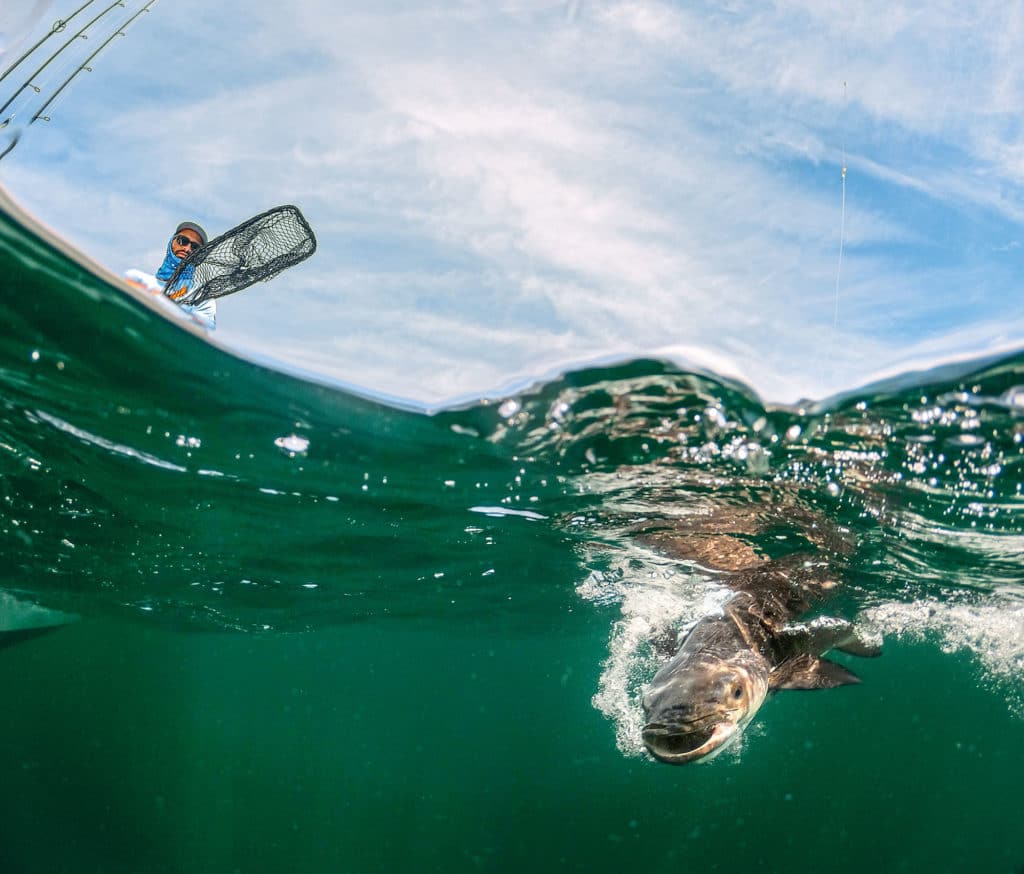
So, you make an hourlong run, arrive to the intended wreck, and slow the boat down to idle to watch for signs of structure on the fish finder. Soon, you spot it. It’s right there on the screen, and above it, a cloud of blue and green marks, indicating fish. What are they? Will they bite? Wreck-fishing may be a roll of the dice, but a solid game plan often produces surprising results.
From May to October, wrecks in 50 to 100 feet of water off the mid-Atlantic coast hold a treasure chest of species. Sea bass, flounder, cobia, triggerfish, false albacore and spadefish can show up anytime. To cover the bases, I carry five rods rigged for different tactics.
First, my cobia rod is a St. Croix 8-foot medium-heavy Avid X inshore, matched with a Shimano Sustain FI 5500 spooled with 50-pound PowerPro and 2 feet of 50-pound Seaguar fluorocarbon leader, to which I tie a 1-ounce Trout Eye jig head rigged with an 8-inch Z-Man Streakz XL. When Mr. Brownsuit appears on the surface, the crew breaks into a fire drill to grab the rod and pitch the lure to the fish.
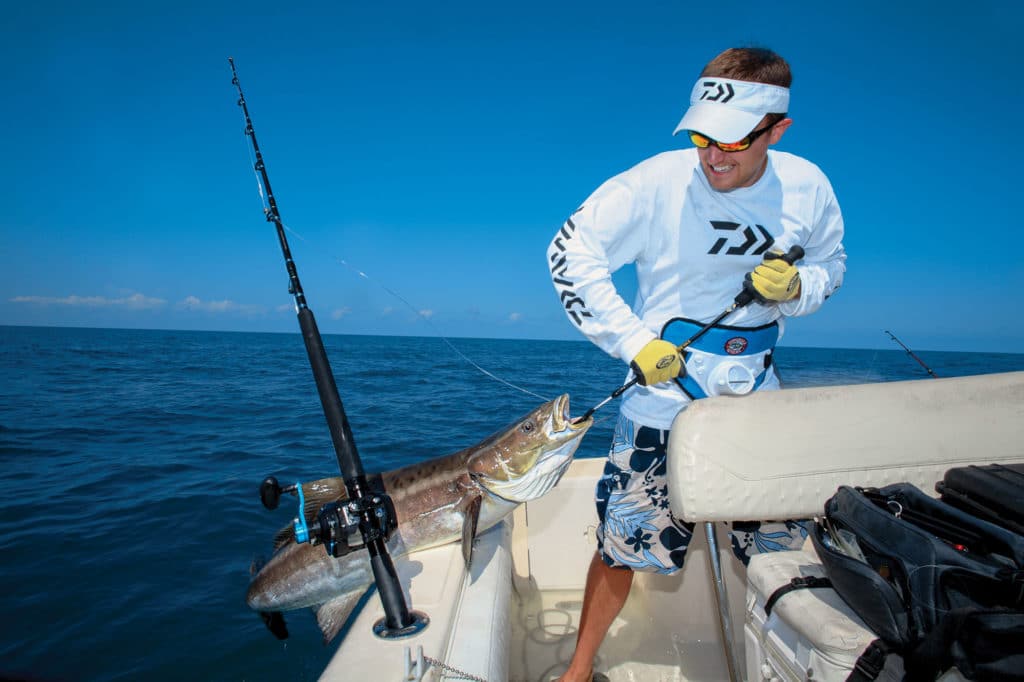
The next outfit—a medium-heavy Shimano Tallus Blue Water Casting rod with a Torium 20 reel spooled with 50-pound braid—is set up for sea bass and triggerfish, with a two-hook bottom rig tied on 50-pound fluorocarbon. With a surgeon’s loop, I attach a 4- to 8-ounce sinker on the end of the leader, then tie two dropper loops 12 inches apart for the Gamakatsu 3/0 live-bait hooks I bait with half-inch chunks of squid.
Third is my flounder combo: a Shimano 7-foot Terez medium-action baitcasting rod with a Calcutta 700B reel and 30-pound braid. I add an 18-inch leader of 30-pound fluoro and tie on a 2-ounce white bucktail tipped with a strip of squid.
No. 4 is for spadefish: a Shimano Terez medium-action spinning rod and Stradic 4500 reel spooled with 30-pound braid and a foot and a half of 30-pound mono leader. I slide a ⅛- to ¼-ounce egg sinker over the leader and tie on a small swivel to attach the spadefish rig, which consists of a red 1/0 live-bait hook snelled on the end of 36 inches of 30-pound fluorocarbon.
Finally, the fifth outfit is a fast-action 7½-foot Daiwa Proteus rod with a Tatula LT spinning reel spooled with 20-pound braid and 18 inches of 30-pound fluorocarbon leader, rigged with a 1-ounce spoon to cast to false albacore busting on the surface.
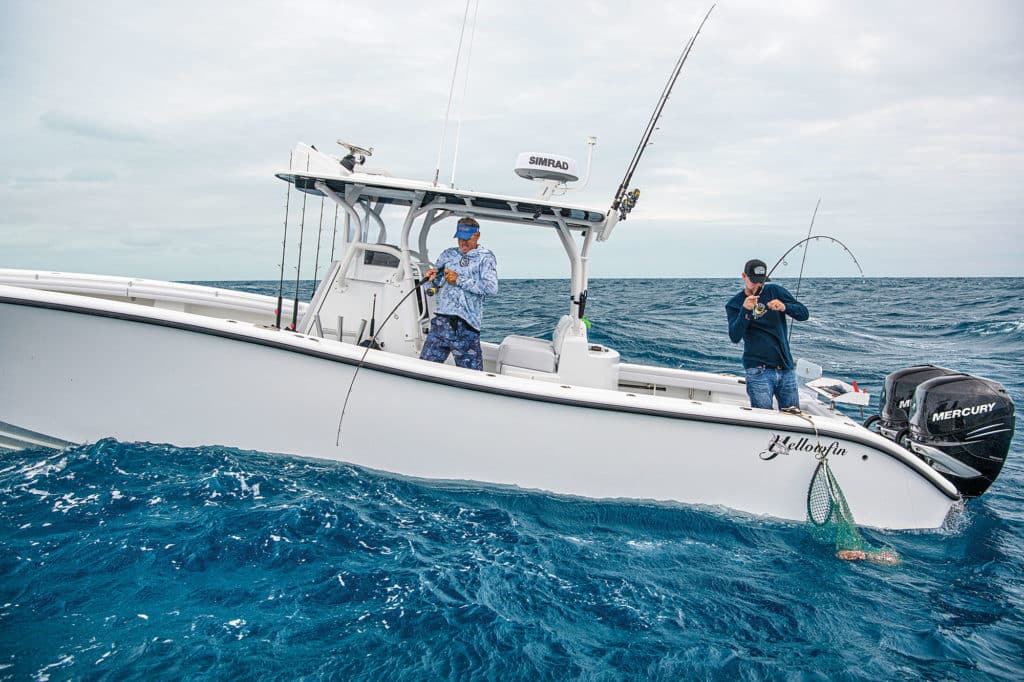
Rigged and ready, I approach the wreck from the upwind side, turn the boat, and take the motor out of gear to drift over the wreck and cover as much real estate as possible.
With the outboard in neutral, one angler drops the bottom rig, another uses a flounder bucktail, and I deploy the spadefish rig and stick the rod in a corner holder. Then we just wait to see what bites first.
My passion for bottomfishing keeps me curious about how anglers target structure in other areas of the country. Conversations with fellow bottom-bouncers often reveal secrets for targeting fish on wrecks and reefs.
New England Bottom Line
Capt. Chris Dos Santos of Barbgail IV fishes the bottom off Point Pleasant, New Jersey, for blackfish and winter flounder. “We catch winter flounder any time of year except winter,” he laughs, adding that he often finds flounder on the down-current side of the wreck, in 120 to 150 feet of water. “They seem to like sand or mud bottom,” Dos Santos adds, explaining that variations in the color and thickness of the bottom on the fish-finder display indicate the composition of the bottom.
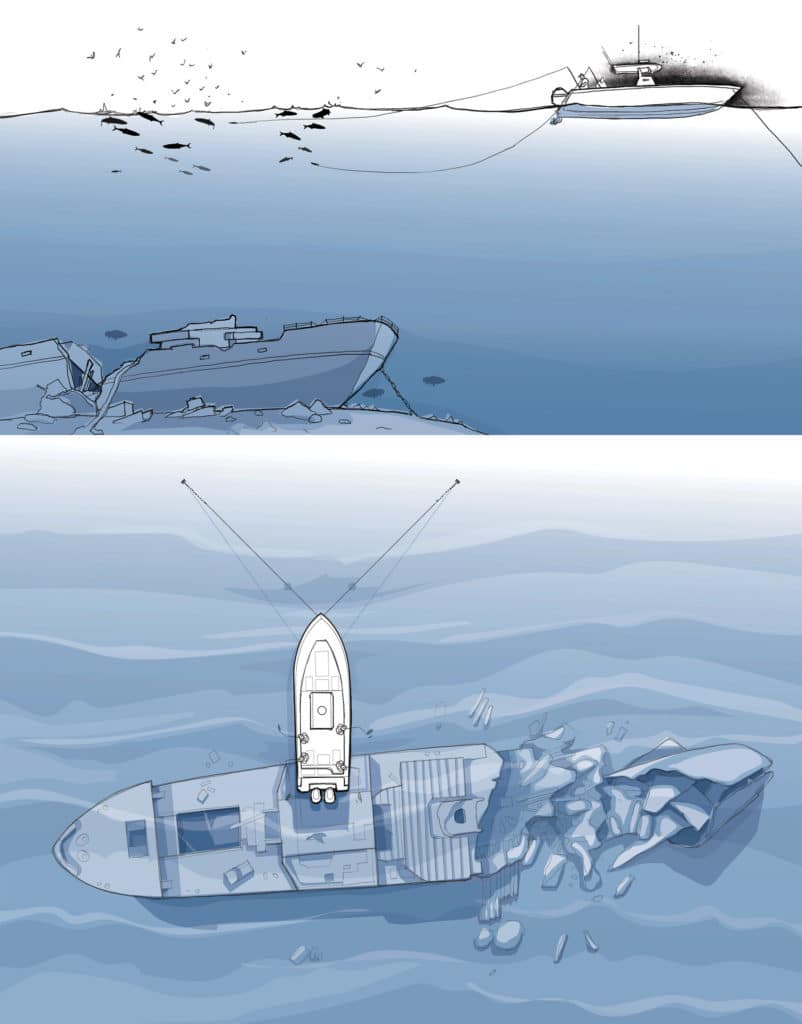
To hold the boat over a wreck, Dos Santos uses two Danforth anchors deployed at a 45-degree angle. But he doesn’t just sit in one place.
To search the wreck, he’ll bump the motor into gear to swing the boat on anchor. “When I mark life on the fish finder, I stop the boat,” he explains.
For blackfish and summer flounder, the classic rig is a single Mustad 1/0 long-shank hook on a single dropper rig tied on to 30-pound fluorocarbon. To pull a big blackfish out of its snaggly home or tickle a winter flounder into biting, use a sturdy Penn Carnage rod and a Penn Fathom two-speed reel spooled with 50-pound braid.
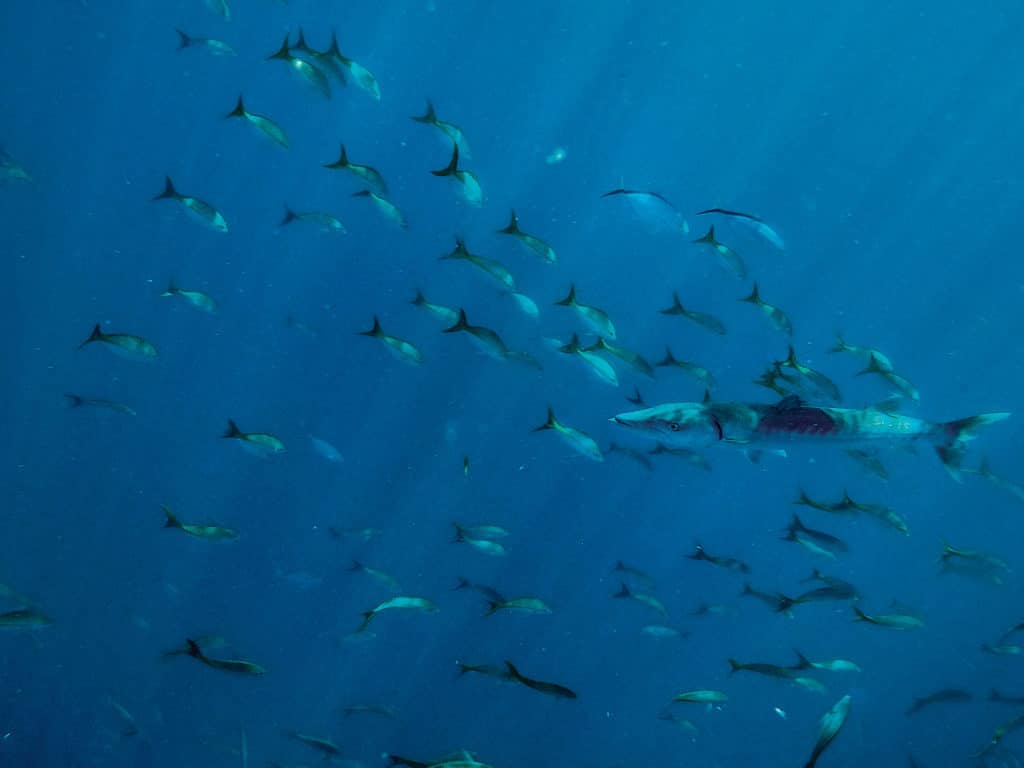
A good trick for tautog, Dos Santos says, is letting the rig sit motionless on the bottom. Don’t bounce the sinker, except to reacquire the bottom. For summer flounder, he entices the fish by twitching the rig, then lifting and dropping again every few seconds.
Catching winter flounder takes patience. “We may wait an hour or more for the fish to bite,” he says. But once they start, he works quickly to score. “You gotta make the most of your time,” he says.
Louisiana Deep-Drop
Capt. John Cole of Southern Catch Outfitters says, “Venice, Louisiana, is known for its tuna fishing, but it’s also a bottomfishing mecca.” Besides natural hard bottom in 300 to 800 feet, he points to scuttled oil wells and abandoned valves for targeting grouper.
Once Cole arrives at the chosen structure, he makes a test drift, marking the speed and direction. Then he pulls up 100 yards ahead of the structure and drops the rigs.
For structure up to 300 feet deep, he uses a Treval S jigging rod and a Talica 25II reel spooled with 60-pound MaxQuatro braided line. “MaxQuatro is thinner than other braid,” he explains. The bottom rig consists of two 10/0 circle hooks on 18-inch, 150-pound-test monofilament droppers and 24 ounces of lead. He baits each hook with a whole 8-inch squid. He adds two water-activated strobes to the top of the rig to draw fish to his bait.
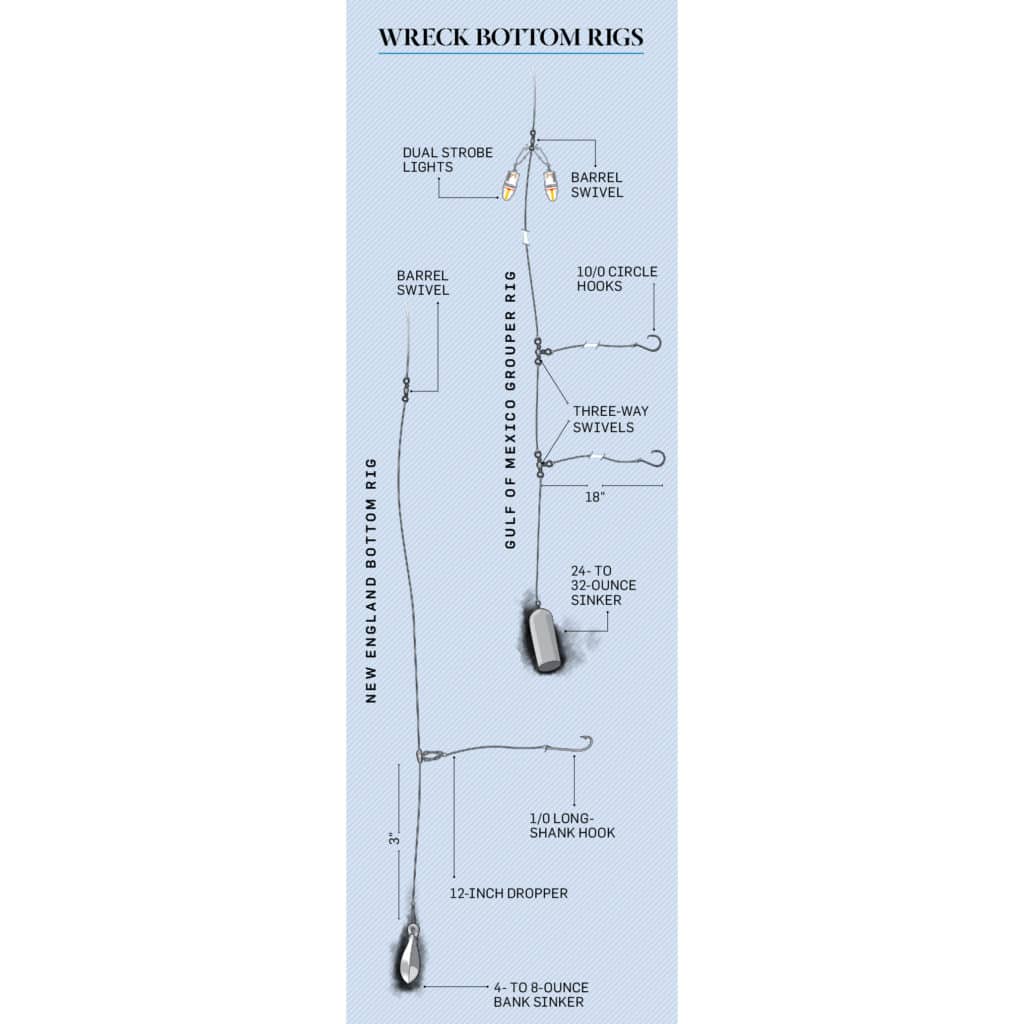
Another tactic to get attention is banging the sinker on the bottom. “Every few minutes, I’ll lift the sinker off the bottom and drop it,” he says. Banging the sinker creates a cloud of mud deepwater fish key in to.
Another tip: Cole allows a little slack in his line so the rig can lie flat on the bottom. “We get more bites when the baits are sticking up out of the mud,” he explains. When the current is strong, he’ll add a smaller sinker to the top of the rig to pull it down into the silt.
Florida Bounty
Capt. Steve Sewell fishes the wrecks off Fort Myers in southwest Florida for cobia, king mackerel and snapper. During the day, he targets kings and -cobia. After dark, he turns his attention to chumming for snapper.
Sewell says king mackerel are present year-round, and cobia show up in winter. “If I pull up to the wreck and don’t mark any bait, I don’t even stop,” he says. When he sees bait on the fish finder, he anchors 75 to 100 feet up-current of the wreck and throws out a couple of handfuls of stunned live baits.
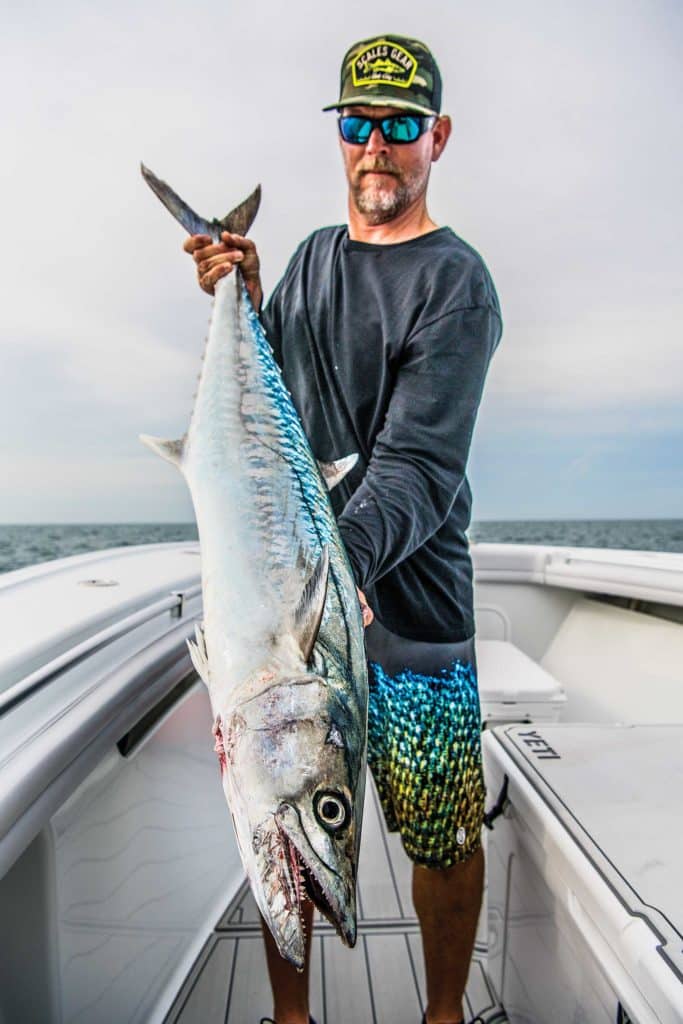
Once he fires up the predators, Sewell pulls out medium-heavy spinning outfits with 4000-series reels spooled with 20-pound braid. He attaches a 6-inch length of No. 5 single-strand wire and a 4/0 circle hook. “If the fish are really finicky, I’ll replace the wire with 60-pound fluorocarbon,” he says.
He hooks a live threadfin through the nose, lobs it toward the wreck, and lets the bait swim naturally. When a fish takes the bait and the line comes tight, Cole instructs anglers to keep the drag light (less than 5 pounds), to prevent the small hook from pulling.
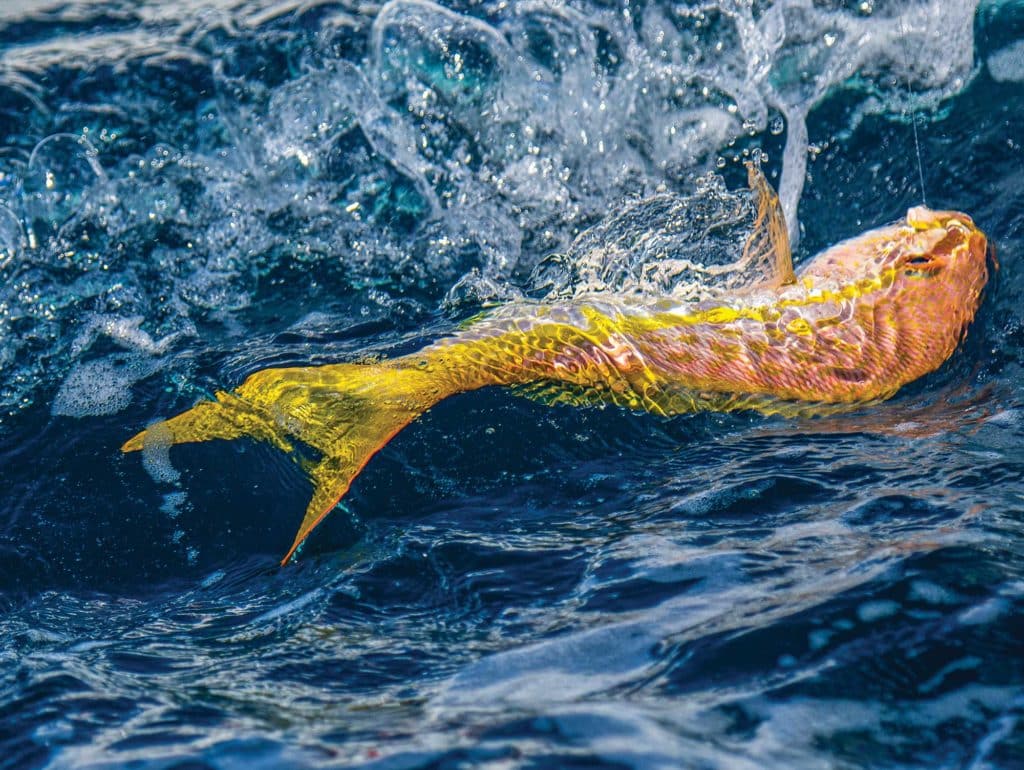
After dark, Cole targets mangrove and yellowtail snappers. After he anchors above the wreck, he deploys a bag of chum. “If we’re marking fish, I’ll chum for a half-hour to get them going, before putting a hook in the water,” he says. Mangrove snapper are particularly finicky. “If you miss a couple of bites, they’ll stop biting,” he says, adding that mangroves seem to bite better when the current is strong.
On the same spinning gear, he rigs a 4-foot leader of 30-pound fluorocarbon with a 1/0 circle hook. Baiting is as simple as burying the hook in a 1-inch piece of sardine. But instead of holding the rod while the bait drops in the current, Sewell places the rod in a holder and opens the bail on the reel. “When line starts whipping off the spool, you close the bail and let the line come tight before grabbing the rod from the holder to fight the fish.”

